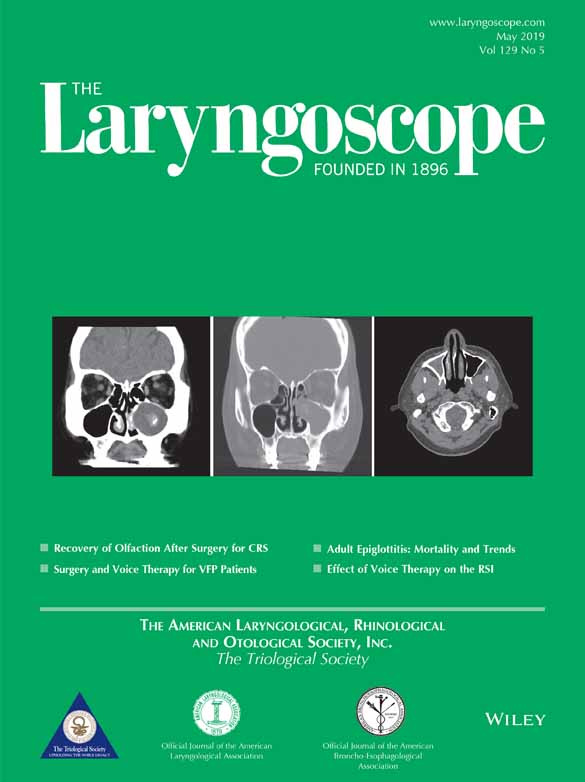Clinical Implications of Tumor-Associated Tissue Eosinophilia in Tongue Squamous Cell Carcinoma
Editor's Note: This Manuscript was accepted for publication on june 4, 2018
This study was supported by grants from Chang Gung Memorial Hospital, Taiwan (CORPG3G0171 and CIRPG3B0013).
The authors have no other funding, financial relationships, or conflicts of interest to disclose.
Abstract
Objectives/Hypothesis
The role of tumor-associated tissue eosinophilia (TATE) in oral cavity cancer remains quite controversial. This study investigated the potential role of TATE in tongue squamous cell carcinoma (TSCC).
Study Design
Retrospective case series.
Methods
This study retrospectively enrolled 259 consecutive TSCC patients who underwent surgery between July 2004 and December 2015. Histopathological examinations for TATE in TSCC tumors were reviewed, and the association of TATE with different clinicopathological factors was evaluated. A nomogram was generated based on several major clinicopathological factors and TATE to improve the accuracy of prognostic prediction.
Results
Higher levels of TATE were significantly associated with male sex, alcohol consumption, cigarette smoking, higher pT classification, advanced disease stage, and tumor depth (P = .006, .003, .024, .041, .013 and .006, respectively). Our results indicated that extranodal extension, cell differentiation, and TATE were independent predictors of overall survival (P < .001, .004, and .032, respectively) and disease-free survival (P < .001, .012, and .013, respectively). TATE levels significantly correlated with circulating eosinophils (r = 0.139, P = .040), and the c-index of our nomogram foroverall survival was 0.786, which demonstrates better accuracy in prognosis prediction than the TNM stage only (c-index = 0.738).
Conclusions
Higher levels of TATE were associated with several clinicopathological factors and poorer survival rates, and a nomogram incorporating TATE levels may strengthen the prediction accuracy of prognosis in TSCC patients.
Level of Evidence
4 Laryngoscope, 129:1123–1129, 2019




